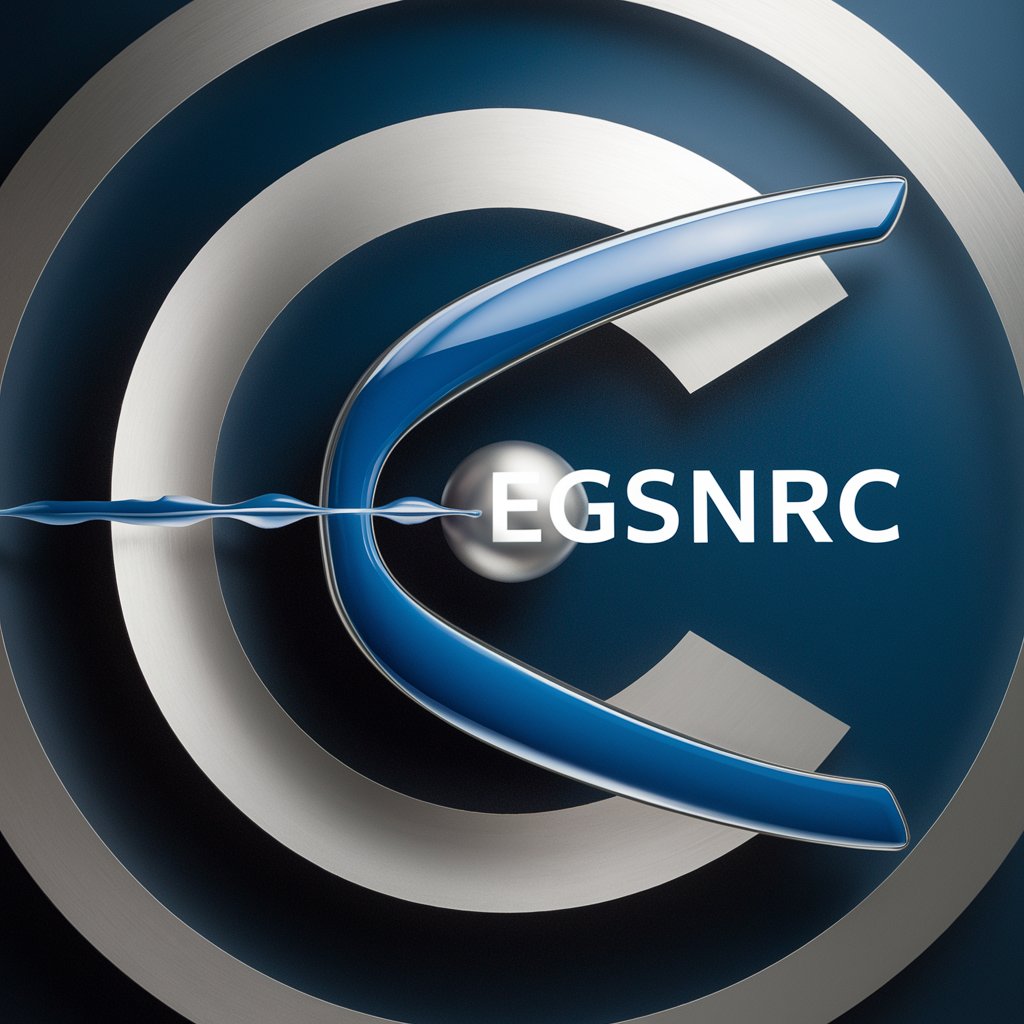
EGSnrc guide - EGSnrc Monte Carlo Simulations

Welcome to the EGSnrc expert guide.
Simulate electron and photon transport with precision.
Explain the capabilities of EGSnrc in simulating radiation transport.
How does EGSnrc handle the transport of electrons and photons?
Describe the variance reduction techniques available in EGSnrc.
What are the key differences between EGSnrc and its predecessor, EGS4?
Get Embed Code
Introduction to EGSnrc Guide
The EGSnrc Guide serves as a detailed manual and reference for the EGSnrc code system, which is designed for the Monte Carlo simulation of the transport of electrons and photons through matter. This system is widely used in medical physics, radiation dosimetry, and radiation therapy planning. It encompasses a broad range of capabilities including the simulation of radiation transport in any element, compound, or mixture, across a wide range of energies. The guide includes detailed explanations of the physics processes involved, the implementation of these processes in the code, and tutorials for both new and advanced users. Examples of applications include the calculation of dose distributions in radiation therapy, imaging techniques, and research in radiological sciences. Powered by ChatGPT-4o。

Main Functions of EGSnrc Guide
Radiation Transport Simulation
Example
Simulating the dose distribution in a tumor during radiation therapy.
Scenario
Medical physicists can use EGSnrc to accurately predict how radiation doses will be distributed in the human body, optimizing treatment plans for cancer patients.
Physics Process Modeling
Example
Modeling the interactions of photons with matter, including processes like photoelectric absorption, Compton scattering, and pair production.
Scenario
Researchers in radiological sciences can investigate the fundamental interactions of radiation with various materials, enhancing understanding and applications in imaging and radiation protection.
Dosimetry Calculations
Example
Determining the absorbed dose in water or tissue-equivalent material from a radiation source.
Scenario
Dosimetrists and medical physicists can calculate the exact dose delivered by therapeutic radiation sources, ensuring patient safety and treatment efficacy.
Educational Tools
Example
Tutorial programs for learning about Monte Carlo simulations and radiation physics.
Scenario
Students and educators in medical physics and radiological engineering can use the guide’s tutorials to enhance their understanding of radiation transport simulations.
Ideal Users of EGSnrc Guide Services
Medical Physicists
Professionals involved in radiation therapy planning and dosimetry calculations would benefit greatly from EGSnrc's detailed simulations to optimize cancer treatment and ensure patient safety.
Radiation Safety Officers
Those responsible for ensuring safe environments in facilities that use radiation can utilize EGSnrc for shielding design and environmental radiation assessment.
Radiological Science Researchers
Researchers investigating the effects of radiation on materials and biological systems can use EGSnrc to model complex interactions and processes at various energy levels.
Educators and Students
Instructors and students in medical physics, radiology, and related fields can leverage the comprehensive tutorials and examples in EGSnrc for teaching and learning about radiation physics and Monte Carlo methods.

Using EGSnrc Guide
Start Your Journey
Begin by visiting yeschat.ai for a hassle-free trial experience, accessible without the need for signing up or subscribing to ChatGPT Plus.
Familiarize Yourself with EGSnrc
Review the comprehensive documentation available, such as the EGSnrc Reference Manual and the PEGS4 User Manual, to understand the system's capabilities, physics processes it simulates, and its structure.
Prepare Your Simulation Environment
Use PEGS4 to create media data files for your simulations, which involve specifying materials, energies, and other physical parameters crucial for your study.
Write and Customize Your Simulation
Leverage the flexibility of EGSnrc by writing or adapting user codes (HOWFAR, HOWNEAR, AUSGAB) to define the geometry, scoring, and transport mechanisms specific to your simulation needs.
Analyze and Utilize Simulation Data
Employ utility codes like EXAMIN or sophisticated user codes for analysis, and apply the simulation results to your specific application, whether it be research, medical physics, or radiation dosimetry.
Try other advanced and practical GPTs
Buzz Boost
Amplify Your Newsletter with AI-Powered Marketing Insights

Academic Mentor
Elevating Your Academic Journey with AI

Assistant Approbation des Comptes
AI-powered compliance and document drafting.

Ancient Hebrew Scholar
Illuminating Ancient Texts with AI

Fugitif
Craft Your Adventure with AI

The Sequential Flowmaster, Beyond Rhymes
Elevating Your Writing with AI-Powered Rhythmic Mastery

Hey Watch It!
Design Your Timepiece with AI

Which Watch
Find Your Perfect Watch, Powered by AI

Timepiece Sage
Mastering Time with AI-powered Precision

DebateMaster
Challenge Your Perspectives with AI

Limerick Scribe
Crafting playful, AI-powered limericks.

MSSQL On-Prem Troubleshooter & CIS Advisor
Expert SQL Server Performance Tuning and Security Hardening Advice

Frequently Asked Questions about EGSnrc Guide
What is EGSnrc?
EGSnrc is a Monte Carlo simulation software package designed for the electron and photon transport modeling in various materials, widely used in medical physics, radiation dosimetry, and research.
How do I create material data for my simulation?
Material data files are created using PEGS4, a data preprocessing code within EGSnrc, where you specify elements, compounds, or mixtures, along with energy ranges and other physical parameters.
Can EGSnrc simulate transport in magnetic fields?
Yes, EGSnrc can simulate charged particle transport in magnetic fields by using specially designed HOWFAR subprograms or Mortran3 macro templates tailored for electromagnetic field transport.
How can I score simulation data?
Simulation data are scored using the AUSGAB subroutine, which you customize to record specific parameters of interest at various stages of the particle transport process.
What are some advanced features of EGSnrc?
EGSnrc includes advanced features like electron impact ionization modeling, multiple scattering theories overcoming Molière's theory limitations, and transport in electromagnetic fields, enhancing simulation accuracy.